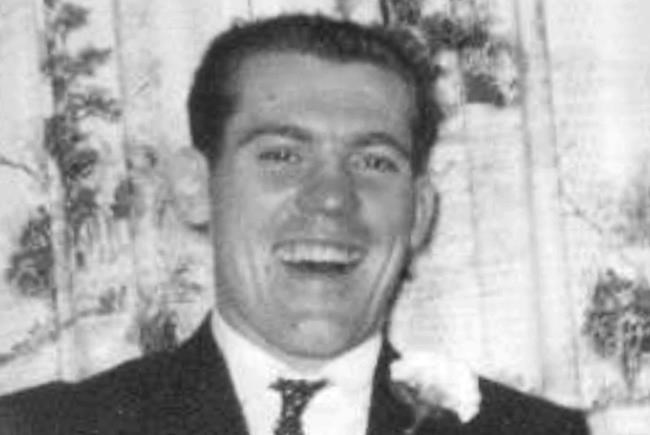
This October 1962 photo released by the New Hampshire Attorney General's Office shows Winston "Skip" Morris, whose remains were found along Interstate 93 in Salem, N.H., on Aug. 7, 1969. Officials announced Monday, April 6, 2020, they had finally identified the remains as those of Morris, of Vermont, who had been released from prison three months earlier. (New Hampshire Attorney General's Office via AP)
Republished April 06, 2020 - 12:29 PM
Original Publication Date April 06, 2020 - 11:21 AM
CONCORD, N.H. - Thanks to an old-fashioned fingerprint-matching technique, the remains of a shooting victim found alongside a New Hampshire highway 50 years ago have been identified as a Vermont man who had been released from prison three months earlier, authorities said Monday.
The body of Winston “Skip” Morris was discovered by a work crew in a water-filled pit off Interstate 93 in Salem on Aug. 7, 1969. Morris, 30, of Barre, Vermont, had been shot at least six times in the head. Fingerprints were taken at the time, but there were no state or national databases to search.
After exhuming the body in 2012, investigators obtained new fingerprints and submitted them to regional databases and to FBI system multiple times, most recently in July. But they didn’t get a match until a criminalist at the New Hampshire State Police Forensic Lab manually plotted the characteristics from one of Morris’s fingers.
“I chose to play old school, I’m not a youngster, so I went back to plotting the minutiae or individual characteristics myself,” said Timothy Jackson, who is scheduled to retire in June.
“When you’re looking at a finger that’s been in the ground since 1969, the epidermal layer of skin is gone. What we’re truly looking at is the inner layer,” he said in a phone interview Monday. “It was off enough that the system couldn’t make the correct comparison. When I did it myself, I knew what I was looking at.”
The attorney general's Cold Case Unit had been trying to identify the remains for years. Those efforts included an examination by University of Maine anthropologist Marcella Sorg, who provided a fuller picture of the man’s appearance, including his over-sized lower jaw and buck teeth. She also noted that he had a broken leg that had been repaired with a surgical plate and screws.
A forensic artist later created a facial reconstruction of the man’s skull, and a DNA profile was submitted to a database of profiles developed from people looking for missing relatives.
Morris’ family, who declined to comment through investigators, told authorities they had contacted law enforcement, the Salvation Army and the Unsolved Mysteries television show over the years as they searched for him. They told investigators Morris had been released from the Vermont State Prison on May 9, 1969, and spent time in Boston the following month and in Glastonbury, Connecticut, that July. He was last seen alive in Burlington, Vermont, on July 25, 1969.
Jackson said finally identifying the remains felt good for a number of reasons.
“We realize now maybe the family’s going to get some closure,” he said. “It definitely gave our Cold Case Unit at the attorney general’s office help in their investigation and hopefully solving this someday.”
The Cold Case Unit was created in 2009. In 2019, it solved its oldest crime, the 52-year-old shooting death of an auto repair shop worker in Andover. Investigators said Thomas Cass, 67, of Orleans, Vermont, killed Everett Delano, 49. Cass killed himself in 2014, four days after authorities told him that evidence linked him to the murder.
News from © The Associated Press, 2020